Contents
Guide
Page List
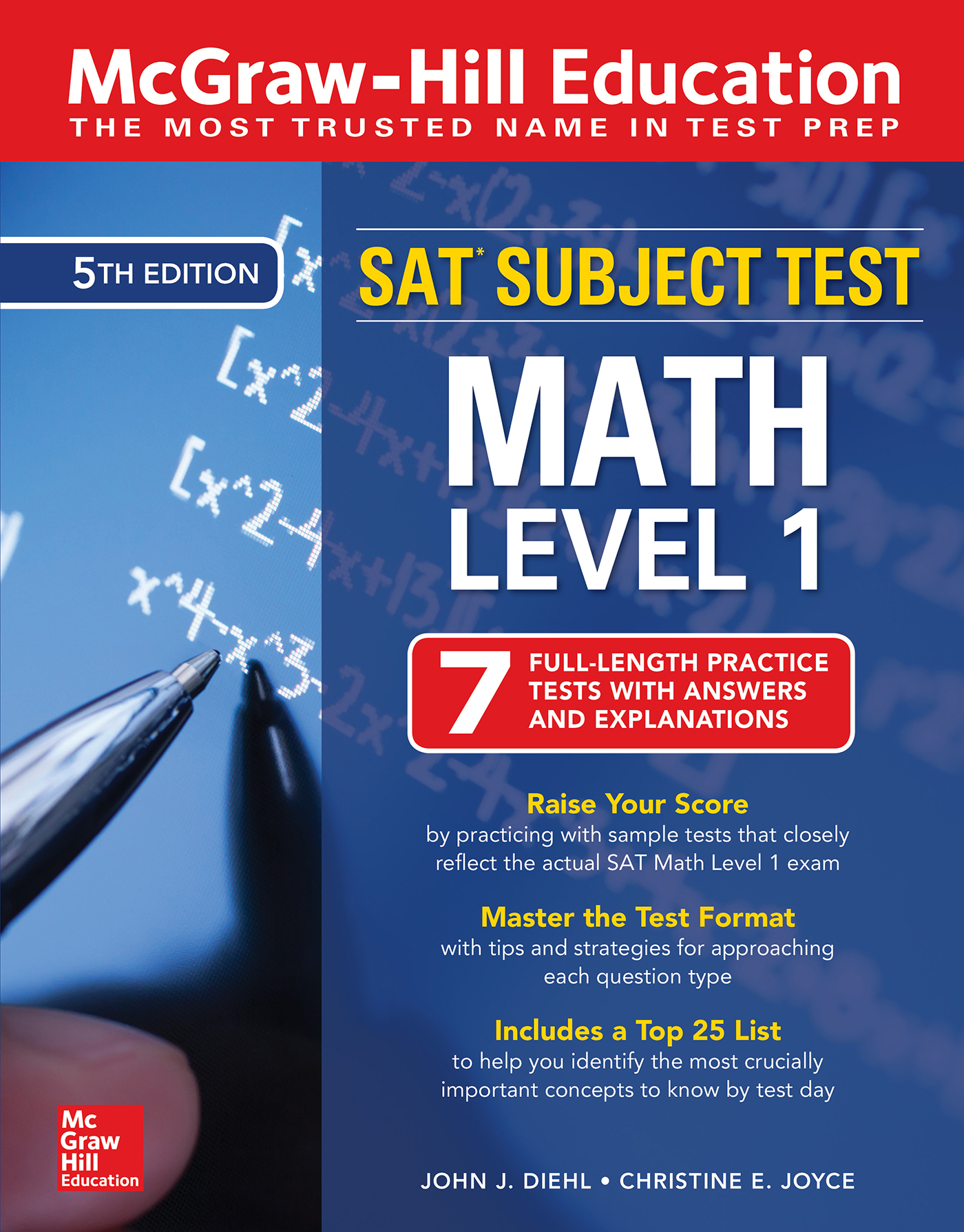

Copyright 2019, 2016, 2012, 2009, 2006 by McGraw-Hill Education. All rights reserved. Except as permitted under the United States Copyright Act of 1976, no part of this publication may be reproduced or distributed in any form or by any means, or stored in a database or retrieval system, without the prior written permission of the publisher. ISBN: 978-1-26-014278-5
MHID: 1-26-014278-7 The material in this eBook also appears in the print version of this title: ISBN: 978-1-26-014277-8, MHID: 1-26-014277-9. eBook conversion by codeMantra
Version 1.0 All trademarks are trademarks of their respective owners. Rather than put a trademark symbol after every occurrence of a trademarked name, we use names in an editorial fashion only, and to the benefit of the trademark owner, with no intention of infringement of the trademark.
Where such designations appear in this book, they have been printed with initial caps. McGraw-Hill Education eBooks are available at special quantity discounts to use as premiums and sales promotions or for use in corporate training programs. To contact a representative, please visit the Contact Us page at www.mhprofessional.com. Special Contributor: Wendy Hanks SAT is a registered trademark of the College Board, which was not involved in the production of, and does not endorse, this product. TERMS OF USE This is a copyrighted work and McGraw-Hill Education and its licensors reserve all rights in and to the work. Use of this work is subject to these terms.
Except as permitted under the Copyright Act of 1976 and the right to store and retrieve one copy of the work, you may not decompile, disassemble, reverse engineer, reproduce, modify, create derivative works based upon, transmit, distribute, disseminate, sell, publish or sublicense the work or any part of it without McGraw-Hill Educations prior consent. You may use the work for your own noncommercial and personal use; any other use of the work is strictly prohibited. Your right to use the work may be terminated if you fail to comply with these terms. THE WORK IS PROVIDED AS IS. McGRAW-HILL EDUCATION AND ITS LICENSORS MAKE NO GUARANTEES OR WARRANTIES AS TO THE ACCURACY, ADEQUACY OR COMPLETENESS OF OR RESULTS TO BE OBTAINED FROM USING THE WORK, INCLUDING ANY INFORMATION THAT CAN BE ACCESSED THROUGH THE WORK VIA HYPERLINK OR OTHERWISE, AND EXPRESSLY DISCLAIM ANY WARRANTY, EXPRESS OR IMPLIED, INCLUDING BUT NOT LIMITED TO IMPLIED WARRANTIES OF MERCHANTABILITY OR FITNESS FOR A PARTICULAR PURPOSE. McGraw-Hill Education and its licensors do not warrant or guarantee that the functions contained in the work will meet your requirements or that its operation will be uninterrupted or error free.
Neither McGraw-Hill Education nor its licensors shall be liable to you or anyone else for any inaccuracy, error or omission, regardless of cause, in the work or for any damages resulting therefrom. McGraw-Hill Education has no responsibility for the content of any information accessed through the work. Under no circumstances shall McGraw-Hill Education and/or its licensors be liable for any indirect, incidental, special, punitive, consequential or similar damages that result from the use of or inability to use the work, even if any of them has been advised of the possibility of such damages. This limitation of liability shall apply to any claim or cause whatsoever whether such claim or cause arises in contract, tort or otherwise.
Contents
PART I
About the SAT Math Level 1 Test
CHAPTER 1
Test Basics
About the Math Level 1 Test
The SAT Math Level 1 test is one of the Subject Tests offered by the College Board. It tests your knowledge of high school math concepts and differs from the SAT general test, which tests your math
aptitude. The test consists of 50 multiple-choice questions and is one hour long.
The SAT Subject Tests (formerly known as SAT II Tests or Achievement Tests) are the lesser-known counterpart to the SAT, offered by the same organizationthe College Board. Whereas the SAT tests general verbal, writing, and mathematical reasoning skills, the SAT Subject Tests cover specific knowledge in a wide variety of subjects, including English, mathematics, history, science, and foreign language. SAT Subject Tests are only one hour long, significantly shorter than the SAT, and you can take up to three during any one test administration. You can choose which SAT Subject Tests to take and how many to take on one test day, but you cannot register to take both the SAT and Subject Tests on the same test day. The Math Level 1 test covers the following topics:  The Math Level 1 test is designed to test a students math knowledge, ability to apply concepts, and higher-order thinking. Students are not expected to know every topic covered on the test.
The Math Level 1 test is designed to test a students math knowledge, ability to apply concepts, and higher-order thinking. Students are not expected to know every topic covered on the test.
When determining which SAT Subject Tests to take and when to take them, consult your high school guidance counselor and pick up a copy of The SAT Subject Tests Student Guide bulletin published by the College Board. Research the admissions policies of colleges to which you are considering applying to determine their SAT Subject Test requirements and the average scores students receive. Also, visit the College Boards website at www.collegeboard.org to learn more about what tests are offered. Use this book to become familiar with the content, organization, and level of difficulty of the Math Level 1 test. Knowing what to expect on the day of the test will allow you to do your best.
When to Take the Test
The Math Level 1 test is recommended for students who have completed three years of college-preparatory mathematics.
Most students taking the Level 1 test have studied two years of algebra and one year of geometry. Many students take the math subject tests at the end of their junior year or at the beginning of their senior year. Colleges look at SAT Subject Test scores to see a students academic achievement, as the test results are less subjective than other parts of a college application, such as GPA (grade point average), teacher recommendations, student background information, and the interview. Many colleges require at least one SAT Subject Test score for admission, but even schools that dont require SAT Subject Tests may review your scores to get an overall picture of your qualifications. Colleges may also use SAT Subject Test scores to enroll students in appropriate courses. If math is your strongest subject, then a high SAT Math score, combined with good grades on your transcript, can convey that strength to a college or university.
To register online for SAT Subject Tests, go to www.collegeboard.org. If you need to register by mail, pick up a copy of the Student Registration Guide for the SAT and SAT Subject Tests from your guidance counselor. General inquiries can be directed via email through the websites email inquiry form or by telephone at (866) 756-7346. The SAT Math Level 1 test is administered six Saturdays (or Sunday if you qualify because of religious beliefs) a year in October, November, December, January, May, and June. Students may take up to three SAT Subject Tests per test day.
The Level 1 vs.
Level 2 Test
As mentioned, the Math Level 1 test is recommended for students who have completed three years of college-preparatory mathematics. The Math Level 2 test is recommended for students who have completed



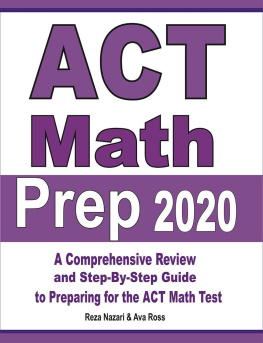
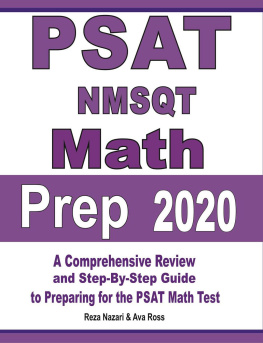
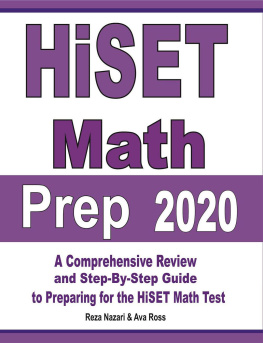
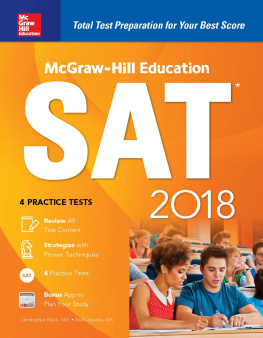

 Copyright 2019, 2016, 2012, 2009, 2006 by McGraw-Hill Education. All rights reserved. Except as permitted under the United States Copyright Act of 1976, no part of this publication may be reproduced or distributed in any form or by any means, or stored in a database or retrieval system, without the prior written permission of the publisher. ISBN: 978-1-26-014278-5
Copyright 2019, 2016, 2012, 2009, 2006 by McGraw-Hill Education. All rights reserved. Except as permitted under the United States Copyright Act of 1976, no part of this publication may be reproduced or distributed in any form or by any means, or stored in a database or retrieval system, without the prior written permission of the publisher. ISBN: 978-1-26-014278-5 The Math Level 1 test is designed to test a students math knowledge, ability to apply concepts, and higher-order thinking. Students are not expected to know every topic covered on the test.
The Math Level 1 test is designed to test a students math knowledge, ability to apply concepts, and higher-order thinking. Students are not expected to know every topic covered on the test.